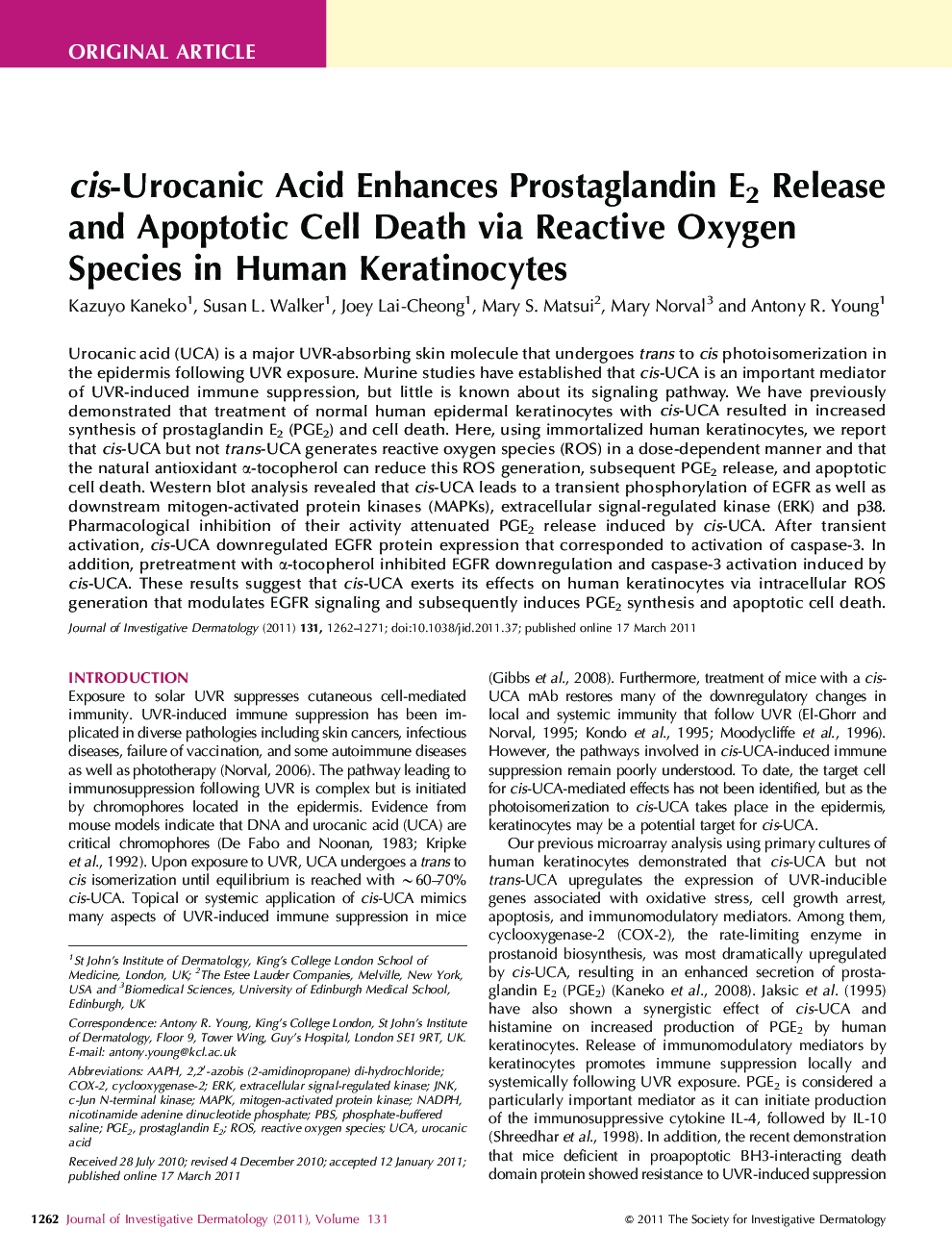| Article ID | Journal | Published Year | Pages | File Type |
|---|---|---|---|---|
| 3215675 | Journal of Investigative Dermatology | 2011 | 10 Pages |
Urocanic acid (UCA) is a major UVR-absorbing skin molecule that undergoes trans to cis photoisomerization in the epidermis following UVR exposure. Murine studies have established that cis-UCA is an important mediator of UVR-induced immune suppression, but little is known about its signaling pathway. We have previously demonstrated that treatment of normal human epidermal keratinocytes with cis-UCA resulted in increased synthesis of prostaglandin E2 (PGE2) and cell death. Here, using immortalized human keratinocytes, we report that cis-UCA but not trans-UCA generates reactive oxygen species (ROS) in a dose-dependent manner and that the natural antioxidant α-tocopherol can reduce this ROS generation, subsequent PGE2 release, and apoptotic cell death. Western blot analysis revealed that cis-UCA leads to a transient phosphorylation of EGFR as well as downstream mitogen-activated protein kinases (MAPKs), extracellular signal-regulated kinase (ERK) and p38. Pharmacological inhibition of their activity attenuated PGE2 release induced by cis-UCA. After transient activation, cis-UCA downregulated EGFR protein expression that corresponded to activation of caspase-3. In addition, pretreatment with α-tocopherol inhibited EGFR downregulation and caspase-3 activation induced by cis-UCA. These results suggest that cis-UCA exerts its effects on human keratinocytes via intracellular ROS generation that modulates EGFR signaling and subsequently induces PGE2 synthesis and apoptotic cell death.
